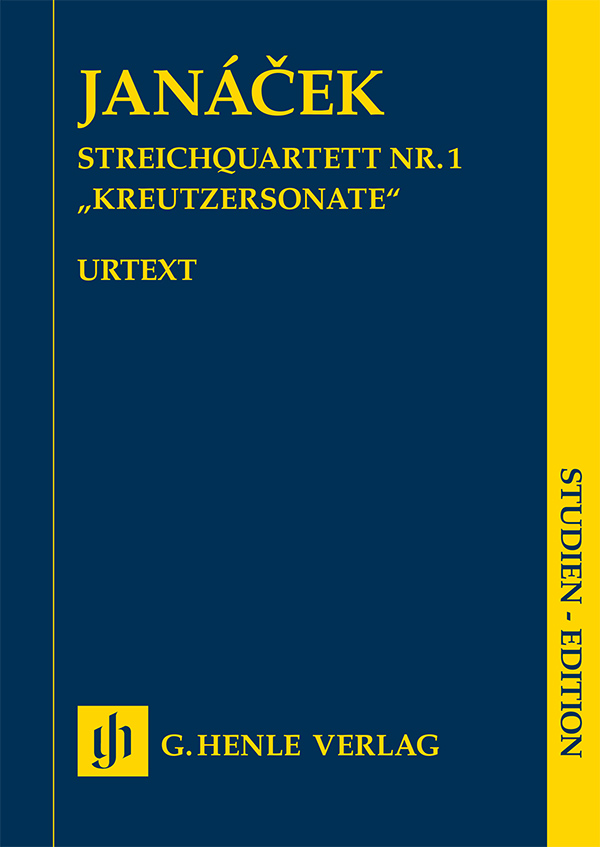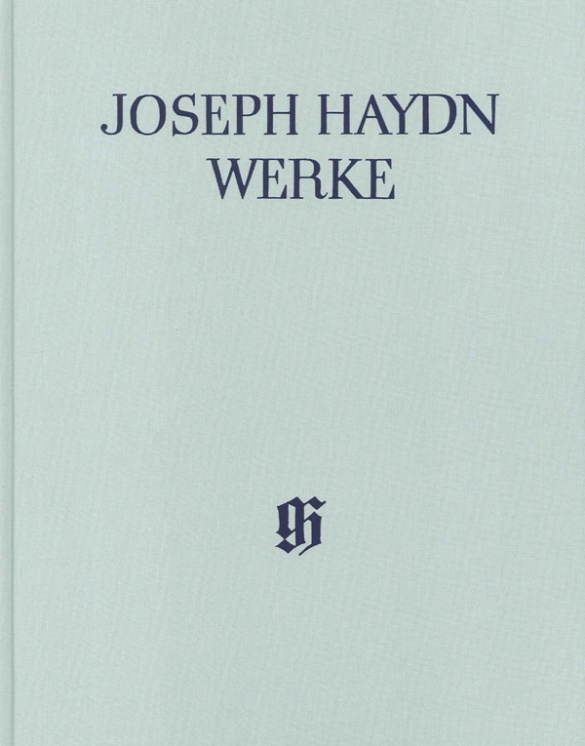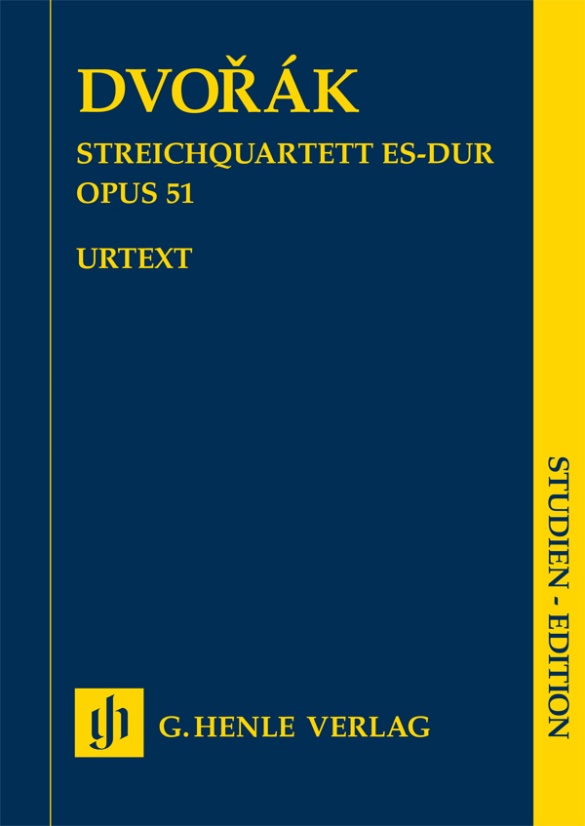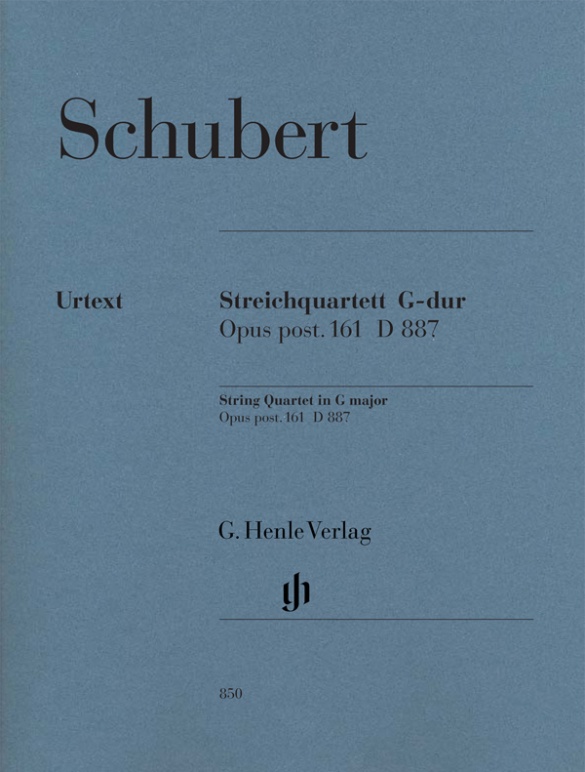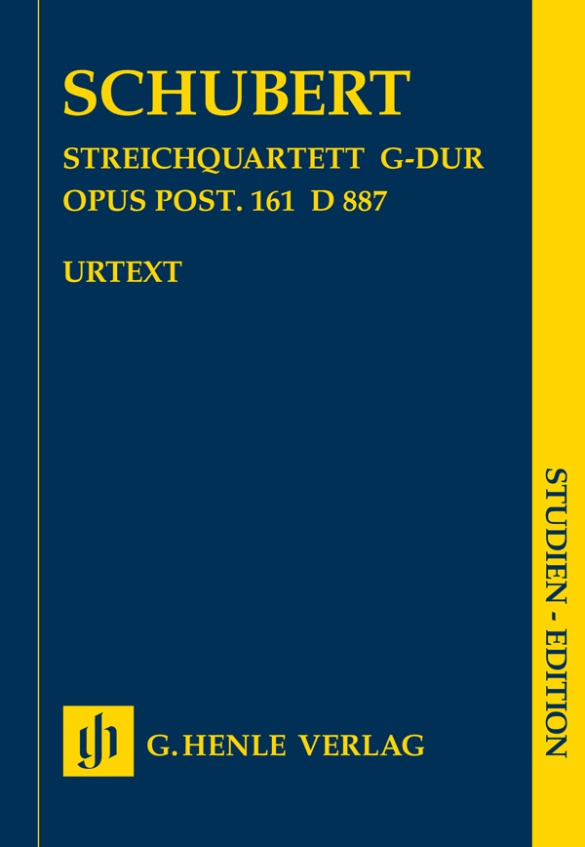Leos Janácek
String Quartet no. 1 “Kreutzersonate”
Deeply moved by Tolstoy’s stirring novella “Kreutzer Sonata”, Leoš Janáček composed a piano trio in 1908, which he however later burned. In October 1923, the String Quartet no. 1, a work again inspired by the novella, was then composed in barely three weeks. As so often the case with Janáček, an intensive process of revision followed, in which two quartet formations were also involved. The sources often do not make it clear whether the changes reflect Janáček’s ideas or were undertaken against his wishes. Janáček specialist Jiří Zahrádka reviewed the material and tracked down sources that were thought to be lost. The musical text of this Urtext edition thus differs in many respects from what has been known up to now. The detailed texts comprehensively reappraise the complex history of its genesis and ensure maximum transparency of the editorial decisions – in short: At long last, an edition that fulfils the highest practical demands and provides musicians with authentic performance material for one of the most important string quartets of the twentieth century!
内容/詳細
作曲家について
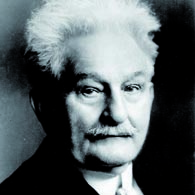
Leos Janácek
He is regarded today as one of the classic opera composers of the twentieth century, whose oeuvre renounces the opera of the nineteenth century to feature music-dramatic realism. He was well known earlier for his choir, chamber, and orchestral works and his collections of folk songs.
| 1854 | Born in Hukvaldy (Moravia) on July 3, the son of a teacher and cantor. |
| 1866 | Chorister at the Augustinian abbey in Brno; music lessons with Pavel Křížkovský, attends the German primary school. |
| 1869–72 | Education at the Slavic Teacher’s Institute, then teacher and choir director in Brno. |
| 1874–75 | Studies at the Prague organ school. |
| 1877 | Suite for Strings. |
| 1879–80 | Studies at the Leipzig Conservatory and in 1880 at the Vienna Conservatory, composes instrumental works. |
| 1881 | Founds an organ school in Brno, which he directs himself. |
| 1884–88 | Reviews of opera performances at the newly opened theater in Brno. |
| 1887 | Beginning of his first operatic composition, “Šárka.” |
| 1890/1899/1901 | Publication of folksong collections. |
| 1904 | Premiere in Brno of the opera “Jenůfa,” which brings him great acclaim and is his most important opera; it treats the problem of the freedom of the individual within the confines of a village community and is regarded as a work of realism. |
| after 1905 | He primarily composes operas drawn from the model of “Jenůfa”: in 1903–07 “Osud” (Fate), “The Excursions of Mr. Brouček” (1908–1920), “Káťa Kabanová” (1920–1921), “The Cunning Little Vixen” (1922–1924), “The Makropulos Case” (1923–1925), “From the House of the Dead” (1927/28) in Brno. |
| 1926 | Sinfonietta; Concertino for piano, two violins, viola, clarinet, French horn, and bassoon; sketches for the violin concerto “The Wandering of a Poor Soul.” |
| 1928 | Death in Moravská Ostrava (Moravian Ostrava) on August 12. |
製品安全に関する情報
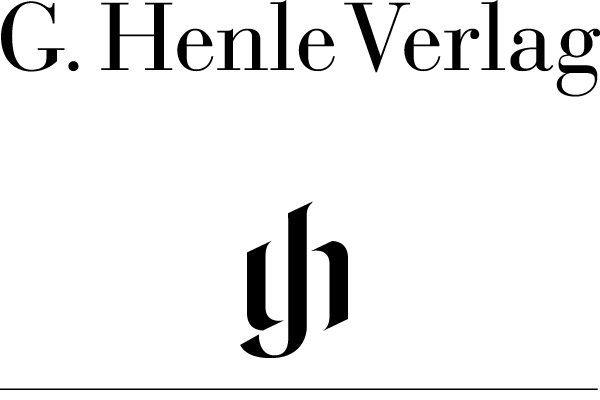
G. Henle Verlag
製品の製造元に関する情報はこちらでご覧いただけます。G. Henle Verlag
Forstenrieder Allee 122
81476 München
info@henle.de
www.henle.com
おすすめ
autogenerated_cross_selling
このタイトルを含む他の版


